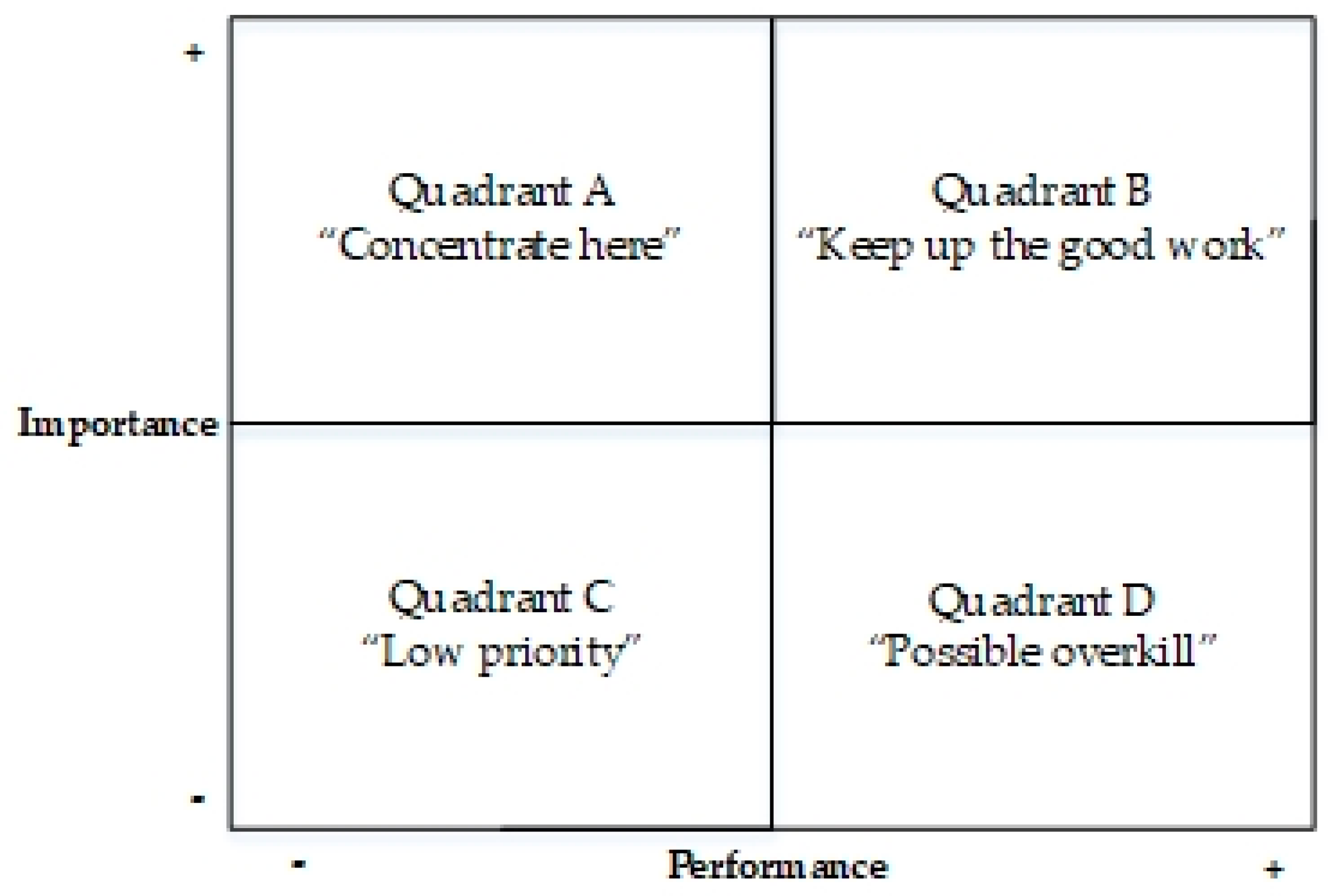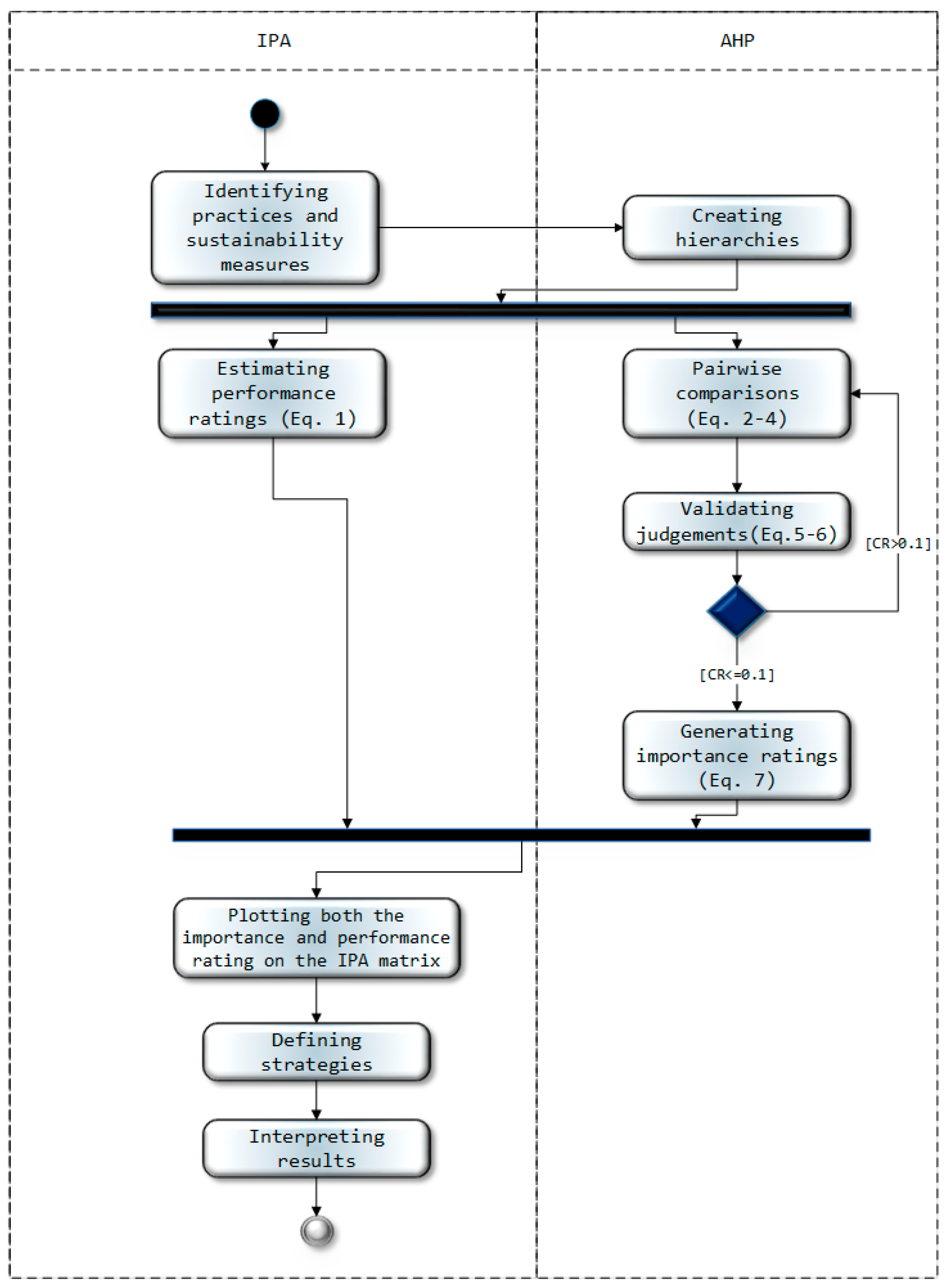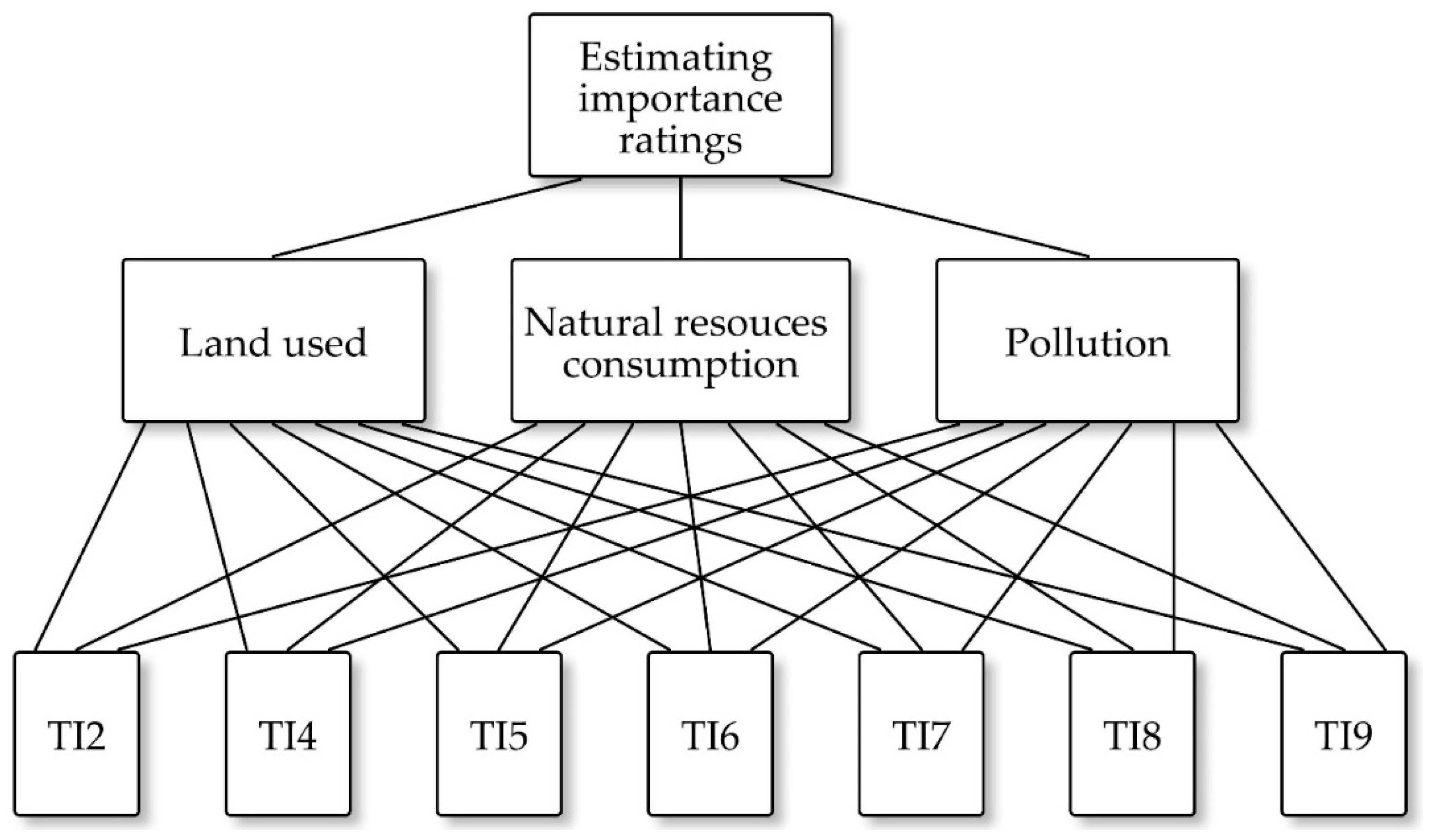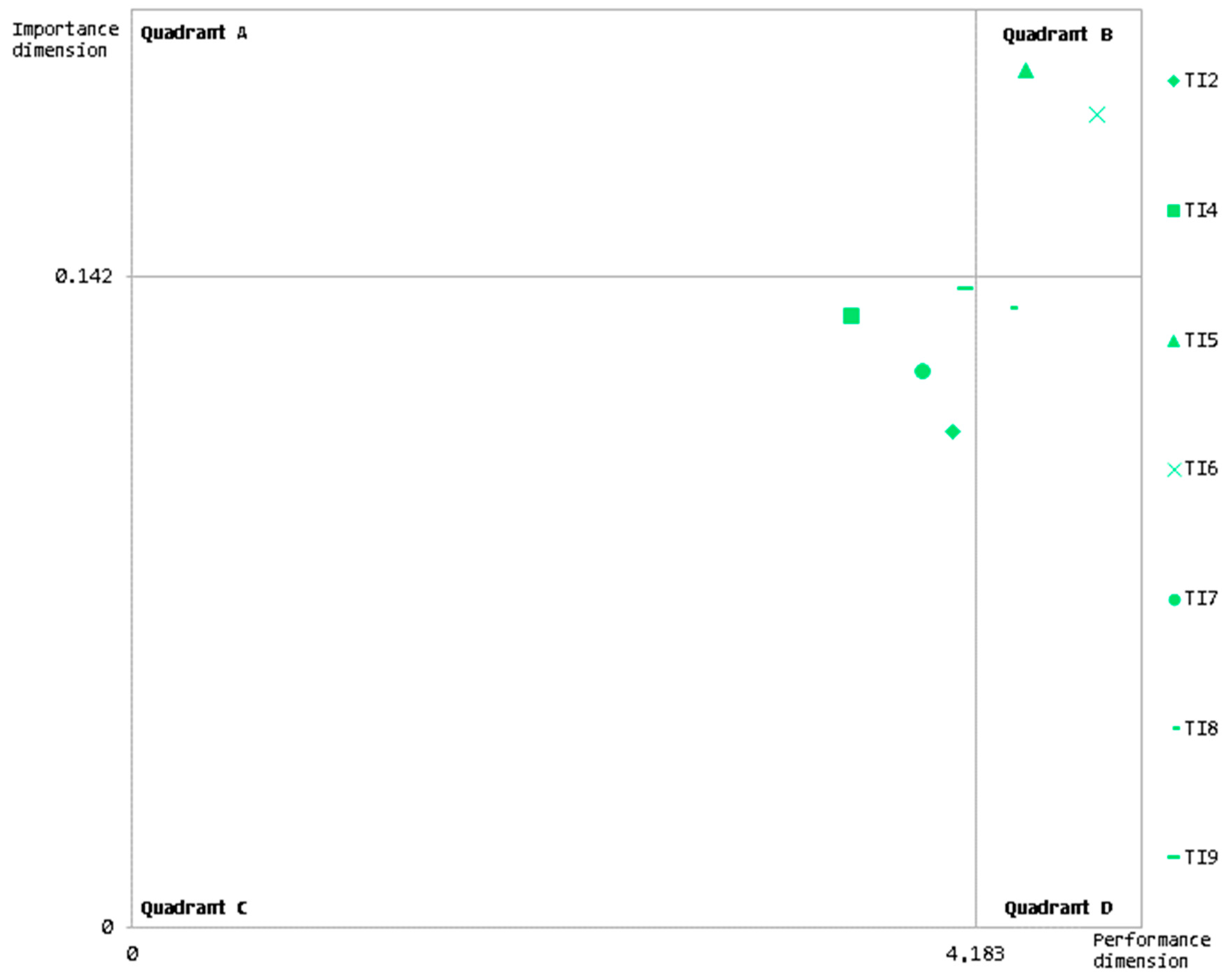3.1. Research Design
The aim of this research is to study the technological innovations adopted by different European companies engaged in urban bus transport in order to increase their cities’ sustainability. The focus of our research is on the European bus transportation sector, due to the patent concern of the EU in reducing greenhouse emissions and improving city logistics from both environmental and social perspectives [
35,
36]. These concerns have been reflected in the growing policy and funding actions to encourage bus firms to adopt a more sustainable business model. This, in turn, is expected to result in improved quality of life for people, communities, governments, and companies. In this respect, it is worth noting that urban bus firms have deployed pioneering contributions in the field of sustainable developments on city logistics within the EU [
37,
38,
39].
Focusing our attention on early methodological solutions adopted in this context, several quantitative approaches have already been used to assess impacts on environmental sustainability dimensions. Cost–Benefits Analysis (CBA) provides a quantitative way of determining whether a system is environmentally sustainable based on a comparison of cost and benefits rules [
40]. Novel CBA models are even incorporating the equity and social dimension into this analysis [
41]. The Life Cycle Assessment (LCA) approach evaluates the magnitude of a system’s impacts by means of quantifying its inputs (resources consumed) and its outputs related with environmental emissions through its entire life cycle [
42]. Regarding economic feasibility, Life Cycle Costing (LCC) allows the estimation of all the costs a system incurred until its removal [
43,
44]. The Life-cycle sustainability assessment (LCSA) approach goes a step further beyond integrating the analysis of LCA and LCC, together with the analysis of social life-cycle assessment (SLCA) [
45,
46]. The triple bottom line of sustainable thinking is thus covered in a single method.
The above-mentioned approaches are not exempt of challenges, such as those resulting from cost and benefits calculations due to lack of knowledge and natural variability in CBA [
47]. The lack of awareness of LCC has been also pointed out [
48] by professionals, causing a poorly understood representation of the findings in LCSA [
45], among others. In order to complement the existing quantitative approaches, we propose a hybridized mechanism that integrates Analytic Hierarchy Process (AHP) and Importance-Performance Analysis (IPA). The former extracts experts’ knowledge using a ratio scale (verbal measure) to compare the importance of pairs of elements which psychologists state help experts to express their opinion in an easier and more accurate way [
49]. The second method guides decision makers in simply defining effective strategies and their corresponding action priorities. Their results are finally represented in a visual and easily understood visual grid for academics and professionals.
IPA was initially introduced by Reference [
50] for supporting the development of effective marketing strategies in the automobile service sector. Then, this technique allowed the individual measurement of a set of descriptive attributes of customers’ satisfaction in accordance with their corresponding perceived importance and performance. The ratings obtained were plotted in a two-dimensional importance–performance grid (
Figure 1), so that four strategies could be established from each of the four grid areas. Because of its multiple advantages derived from its simplicity, effectiveness, utility, and easy execution [
51,
52,
53], IPA has been widely spread to a great variety of literature fields. Focusing our attention on the sustainability field, several studies have been recently developed with this technique. Various studies [
50,
51] examine how tourism initiatives enable sustainable developments in the residents’ experience. Atzori et al. [
54] explore clients’ perceptions on green practices applied in the food services sector. Eldho et al. [
55] compare the importance and performance of economic, social, and green sustainability practices in dyadic relationships at three supply chain levels: upstream, downstream, and the overall. On the other side of the coin, other research [
56] determines which lean, green, and resilient practices are critical to improve sustainability in the aerospace manufacturing supply chain. These studies highlight that the IPA method has been successfully applied with similar purposes.
Notwithstanding, it must be also pointed out that the IPA method itself is not exempt of weaknesses [
57,
58]. Oliver [
59] already stated that one of these concerns lies in the way in which performance and importance ratings are estimated. According to Reference [
60], the problem does not lie in the scale of performance perceptions but rather in importance perceptions. Previous studies have successfully overcome this issue by adding comparability to the scales through coupling IPA with AHP [
61,
62,
63]. This technique begins structuring a complex problem in a hierarchy composed of the aim of the decision, criteria, and alternatives. Lower-level elements are then compared in pairs (pairwise comparisons) with regard to the higher-element level to generate an alternative ranking.
Table 1 depicts Saaty’s nine-point scale, widely applied to make pairwise comparison.
AHP reinforces the IPA approach in the present study in several aspects. On the one hand, AHP allows the measuring of the importance of specific technological innovations by means of multiple attributes. Thus, the effects of adopted technological innovations by bus transport firms will be accurately measured based on concrete social and green sustainability effects. For this purpose, as suggested in Reference [
65], direct pairwise comparisons between sustainability effects will be carried out to determine the importance of each technological innovations from the city’s sustainability point of view. On the other hand, AHP allows checking the consistency of expert judgements by calculating a consistency ratio (CR). Expert judgements will be considered inconsistent if they do not meet both transitivity property and preferences’ proportionality property. The first implies that if element
is more important than element
and element
is more important than element
, then element
will be more important than element
. The second points out if element
is three times more important than element
and element
is twice as important than element
, then element
will be six times more important than element
. When judgements prove to be inconsistent, they have to be reviewed and the experts interviewed again [
66]. Thus, the construction of the IPA grid will be also reinforced. The next subsection explains step-by-step how the combined IPA–AHP method has been applied in the present study. It includes the procedure to mathematically calculate the CR described in Step 4 (
Section 3.2.4).
3.2. Research Procedure
The procedure presented here is a combination of the IPA and AHP methods. This will help to gain a better understanding on how further business models may make city logistics more sustainable. That hybridization was used in the past in different sustainability studies with very interesting results, as we explained before. However, each generic step must perfectly fit the study requirements.
Figure 2 provides an overview of the IPA–AHP approach applied in this research. This is divided into five steps, which are described as follows.
3.2.1. STEP 1: Identifying Technological Innovations and Their Sustainability Effects in the European Urban Bus Transport Sector
The research began by exploring how urban bus firms in the EU have adjusted their business models to make city logistics more sustainable. With this purpose in mind, two elements were identified.
Firstly, those technological innovations which have been undertaken by European companies of urban bus transport need to be identified. Some researchers [
33] describe them as any practice that represents the adoption of a novel technology related with data acquisition, information, warehousing, or transportation in logistic companies. With a view to identifying these technological innovations, multiple sources of secondary data were consulted from the European Commission, firms of urban bus transport, and other related organisms. Many public reports, studies, programs, and projects were found reported on the website. By means of conducting a comprehensive content analysis [
67], these documents were revised in depth so as to clearly identify what technological innovations have been developed over the past years. These technological innovations and their descriptions were coded and included in a database, together with the relevant information about the companies and the European projects that have respectively adopted and funded them. The criterion for inclusion in the database was for each technological innovation to be at least promoted by innovative projects related to public transport and energy saving.
Table 2 depicts the list technological innovations identified in the research.
Second, those social and environmental sustainability effects that have been improved thanks to the technological innovations implemented need to be identified. For that purpose, four senior academicians were consulted. They were selected according to their recognized knowledge in logistics sustainability and business models. Individual face-to-face interviews were conducted. First, the list of the technological innovations identified in the first stage was explained to the academicians. They identified the specific social and environmental sustainability effects in city logistics that may be affected by those technological innovations and the technological innovations that may lead to improvements in each of the effects. Thus, a specific model per academician was extracted. Once all the interviews were finished, only matching elements were added in one unique final model. Moreover, all connections were corroborated through data collected in the previous content analysis.
Table 3 depicts the final list of environmental and social sustainability effects and the technological innovations impacting each one.
3.2.2. STEP 2: Creating Hierarchies in Environmental and Social Dimensions
Since the classical AHP method was used in Reference [
49] to estimate importance ratings, a hierarchical structure needs to be developed. This represents complex decision problems through the identification of the goal, criteria, sub-criteria, and available alternatives. To do so, the effects of the technological innovations identified on the sustainability dimensions (
Table 3) were taken into account. This research required creating two hierarchies, one per sustainability dimension under study. Each entire hierarchy is represented in three levels, as illustrated in
Figure 3 and
Figure 4. In the top level, we place the aim of the decision problem. The elements in the second levels are the sustainability effects considered in the environmental and social dimensions, respectively. The bottom level contains those technology innovations that may lead to any improvement in each sustainability dimension. Each line shows, with regards to a higher element, a lower element compared to the rest of the elements in the same level. Since we applied AHP to estimate a global importance score of each technological innovation in the environmental sustainability (
Figure 3) and the social sustainability (
Figure 4), all technological innovations were linked with every sustainability effect. Otherwise, a relative importance score of each technological innovation would have been generated per each sustainability effect with which it is linked and, therefore, the hybridization of IPA and AHP would not have been possible in our study.
3.2.3. STEP 3: Generating Performance Ratings of Technological Innovations
With the goal of generating performance ratings, a panel of 14 Spanish experts on urban transport was created. They were informed about the purpose of the research, its confidential nature, and their right to decline participation. In order to guarantee the results’ validity, the participants should pertain to a wide variety of positions and backgrounds [
68]. They were selected for having a minimum experience of 4 years in the bus transportation field, and all of them were still in direct and daily contact with the field.
Table 4 summarizes the experts’ profiles. Fourteen participants is also considered a good panel size to provide reliable findings, as suggested by the literature [
69,
70,
71]. In order to minimize the group-thinking effects in research findings, no methodology was used to reach expert consensus. Formal or informal communication among the participants was not possible due to the experts not knowing at any moment who participated in the research. Nor was it allowed for the experts to receive answer reports and thus change their own opinion based on this feedback.
The experts’ panel was consulted during March and April of 2017. The data were gathered using a structured online questionnaire. This was individually emailed to the participant experts. The questionnaire began with a brief description of the research goal as well as detailed instructions to answer each part. The first part exclusively included questions on the experts’ profile (professional experience, current position, and academic studies). The second and third parts requested information on the importance and performance perceived of each technological innovation in accordance with the hierarchical structure of the environmental and social sustainability dimensions (
Figure 3 and
Figure 4), respectively. Concerning the performance rating, we added a question per technological innovation included in the respective hierarchy. In each question, the experts had to measure the perceived performance in environmental sustainability and social sustainability in the second and third parts, respectively. In this way, a symmetrical 5-point Likert scale was used (1 = insignificant, 2 = low performance, 3 = moderate performance, 4 = high performance, 5 = very high performance). Once all the questionnaires were received, performance ratings of technological innovations (
) were generated by applying Equation (1) [
50].
where
represents the performance score that expert
assigned to technological innovation
and
represents the number of participants.
3.2.4. STEP 4: Estimating the Importance Ratings of Technological Innovations
The questionnaire also included, in the second and third parts, specific questions to estimate the importance ratings of each technological innovation. The experts were asked about the importance of each element with respect to each of the others at each level of the hierarchy. Their judgements were gathered using the nine-point scale presented in
Table 1. The pairwise
matrix A may be directly built using Equations (2) and (3):
where,
Each entry in the main diagonal is always equal to 1, since
indicates the importance of element
compared to itself. If
, the importance of elements
and
is the same. If
, the importance of element
is considered higher than the importance of element
. If
, the importance of element
is considered lower than that of element
. Matrix
is therefore reciprocal, and the number of pairwise comparisons required (NPC) is computed using Equation (4).
Subsequently, the consistency of the experts’ judgements must be checked using the principal eigenvalue (
). This allows estimating
(5) and the consistency index (
) (6) [
72]:
where
is the random consistency index [
64]. If
, the judgements provided by the experts are not considered consistent. The implication of this is that the pairwise comparison must be verified and repeated by the experts. If
, then the experts’ judgements are considered consistent and the vector of importance rating (
) can be already generated by applying (7). In this study, the calculations were made by expert choice software. The
values were 0.04 and 0.03 for the environmental and the social sustainability dimensions, respectively. It is important to point out that unless CR = 0, the expert judgements are not considered to be completely consistent [
73]. The CR values reached in our research highlight that the expert judgements did not present a total level of agreement although they were below the limit value and therefore pairwise comparison did not have to be repeated,
3.2.5. STEP 5: Generating Importance Performance Analysis (IPA) Matrices
Once the importance and performance ratings had been obtained, the IPA matrix was generated. On the one hand, the importance rating of each technological innovations was plotted in the Y-axis and the performance rating of each technological innovations was plotted in the X-axis as coordinates (x,y) in a graph. On the other hand, the grand mean of importance ratings (the cutting point of the Y-axis) and the grand mean of performance ratings (the cutting point of the X-axis) were represented [
74]. Thus, the graph was converted into a two-dimensional grid with a division into four quadrants with the following meaning:
Quadrant A (Concentrate here). Technological innovations plotted in this quadrant present a high level of importance and a low level of performance. Hence, this quadrant is known as the preferential improvement area. Even though these technological innovations enable improvements in either the social or environmental sustainability of city logistics, scarce efforts and resources have been allocated for their implementation. Managers ought to prioritize the development of these technological innovations.
Quadrant B (Keep up the good work). Technological innovations represented in this quadrant show a high level of importance and a high level of performance. The managers of urban bus transport firms should maintain current efforts and resources allocated to them, because these technological innovations have proven to improve sustainability in city logistics.
Quadrant C (low priority). Technological innovations represented in this quadrant show a low level of importance and a low level of performance. These do not require an assignment of additional resources and efforts since those technological innovations do not provide enough improvements in either the social or environmental sustainability of city logistics.
Quadrant D (possible overkill). Technological innovations plotted in this quadrant present a low level of importance and a high level of performance. Urban bus transport companies have addressed excessive efforts and resources to developing these technological innovations when they do not provide enough improvements in the sustainability of city logistics. Therefore, managers should cut down on the resources and efforts for these technological innovation developments.










